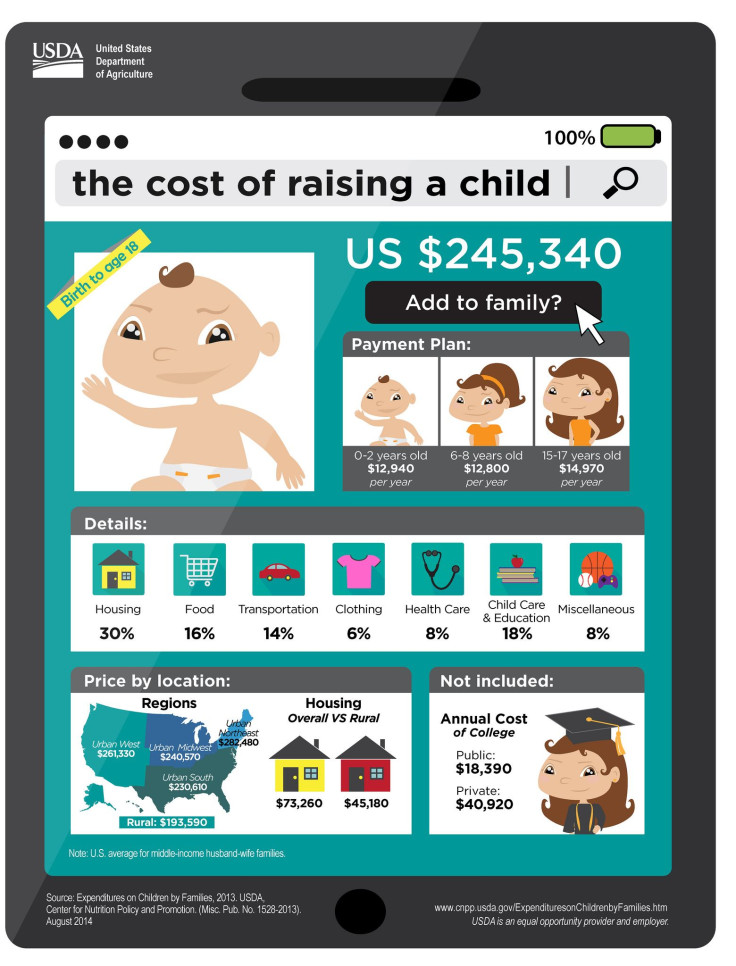The Cost Of Having A Child Born In 2013 Will Make You Want To Have Literally Anything Else

If you're looking to have a child but you also enjoy having money, you're not alone -- and you're about to be disappointed.
The latest numbers from the U.S. Department of Agriculture leaves no doubt of the costly prospect of bring a kid into the world. To raise a child born in 2013, from birth to the age of 18, will set a middle-income family back, on average, $245,340 -- a 1.8 percent increase from 2012. With inflation, that cost comes to $304,480.
That hefty sticker price includes food, housing, clothing, childcare, education and other kid-related expenditures all adding up even before your darling child enters college. Higher education and pregnancy-related costs are not part of the USDA's bill. Of these costs, housing is the highest expense (30 percent) followed by child care/education (18) percent and food (16 percent).
If you're looking to have children without breaking your bank, we've gleaned three helpful "child hacks" from the statistics given:
1. If you must have children and save money, have multiple kids! Households with three or more children spent 22 percent less per child than two-child-households did, as kids can share a room, clothes and other cost-reducing measures.
2. Move to a rural region where the average cost per child is $193,590 -- the lowest of the four regions.
3. Whatever you do, don't live in the urban Northeast, where you can expect to pay If you live in the urban Northeast, expect to pay the most for your child, $282,480.
Kids, over time, became more expensive, and expect to spend, on average, $14.970 on your 17-year-old. While the cost of raising a child has slowed, the median income is still 8 percent below what is was prior to the recession, notes CNN Money, which makes raising a child a very costly venture.
The USDA compiled the "Expenditures on Children by Families, 2013" report using the 2005-06 Consumer Expenditure Survey which surveyed 11,800 husband-wife households and 3,350 single-parent households. "In addition to giving families with children an indication of expenses they might want to be prepared for, the report is a critical resource for state governments in determining child support guidelines and foster care payments," said Kevin Concannon, USDA Food, Nutrition and Consumer Services Under Secretary.
To figure out how much it would cost to raise a child, the USDA has a calculator. Happy budgeting!
© Copyright IBTimes 2024. All rights reserved.






















